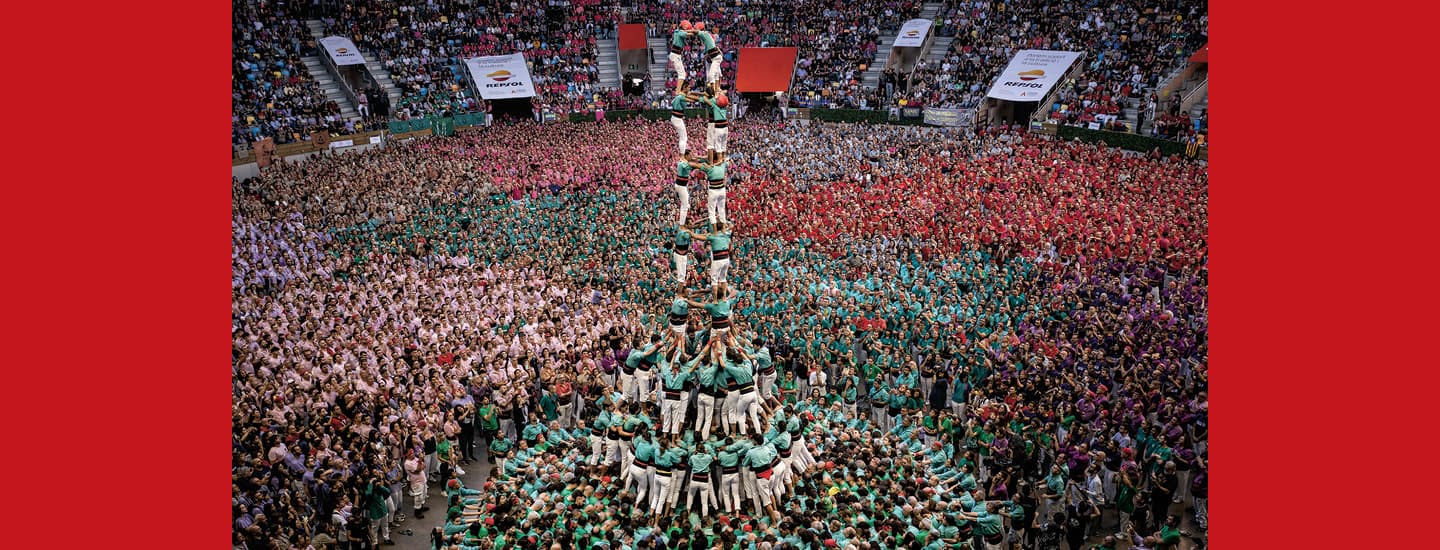Jim McMahon
Why are these people in Spain’s Catalonia region stacked on top of each other? Human towers—called castells—are a tradition believed to have originated with Catalan dance groups in the 1700s. In October, Spain’s biggest biennial castell competition took place for the first time since before the Covid-19 pandemic, with 11,000 spectators packing into the city of Tarragona to watch. Groups of castellers compete to construct the tallest, most complicated tower; this year, the team from Vilafranca (above) beat 40 other teams to win 16,000 euros (more than $15,000). Their tower was about 43 feet high, and they earned extra points for a safe dismount. Although Catalonia is part of Spain, many residents don’t view themselves as Spanish, as they have their own distinct culture and language. The castell practice is passed down from generation to generation and often helps build relationship bonds. “We train twice a week normally,” participant Juan Manuel Rodriguez told Reuters, “but . . . it’s a social activity that goes beyond making castells and training.”

